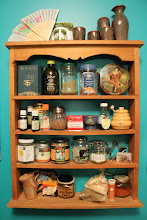I've been home from work for a couple of days now with an awful cold and flu. With the loss of most of my voice, you can only imagine how many cough drops I've gone through. I needed a change...so off to the cough/cold aisle in Shoppers. I found a few new options and chose the unfamiliar Seaberry Ricola. I'm no stranger to Ricola, but clueless about Seaberry. Reading the ingredients, I decide that if it goes so well with grapefruit, I'll probably like it.
Seaberry flavoured Ricola is different. It's not quite as soothing as the original Ricola, but it's bright and fruity (a welcome change from all the menthol).
This Just In
- Seaberry is more commonly referred to as Sea-buckthorn. It grows from the Atlantic coasts of Europe right across to northwestern China. In western Europe, it is mostly confined to sea coasts where salt spray off the sea prevents other larger plants from out-competing it.
- The female plants produce orange berries 6–9 mm in diameter, soft, juicy and rich in oils.
- Harvesting is difficult due to the dense thorn arrangement among the berries on each branch. A common harvesting technique is to remove an entire branch. A branch removed in this way is next frozen, allowing the berries to be easily shaken off.
- Sea-buckthorn berries are edible and nutritious, though very acidic and astringent.They are unpleasant to eat raw, unless frosted to reduce the astringency and/or mixed as a juice with sweeter substances such as apple or grape juice.
So much to learn about Seaberries. Thanks Wikipedia!

No comments:
Post a Comment